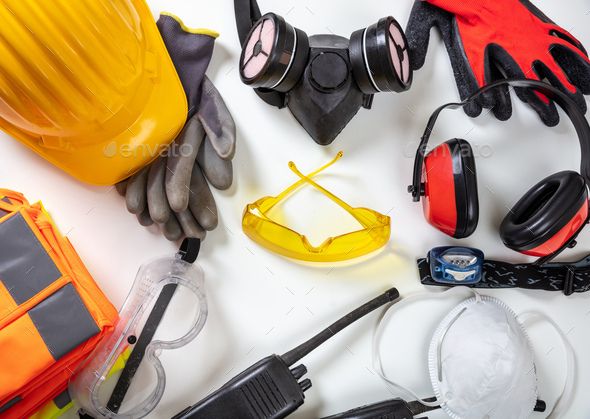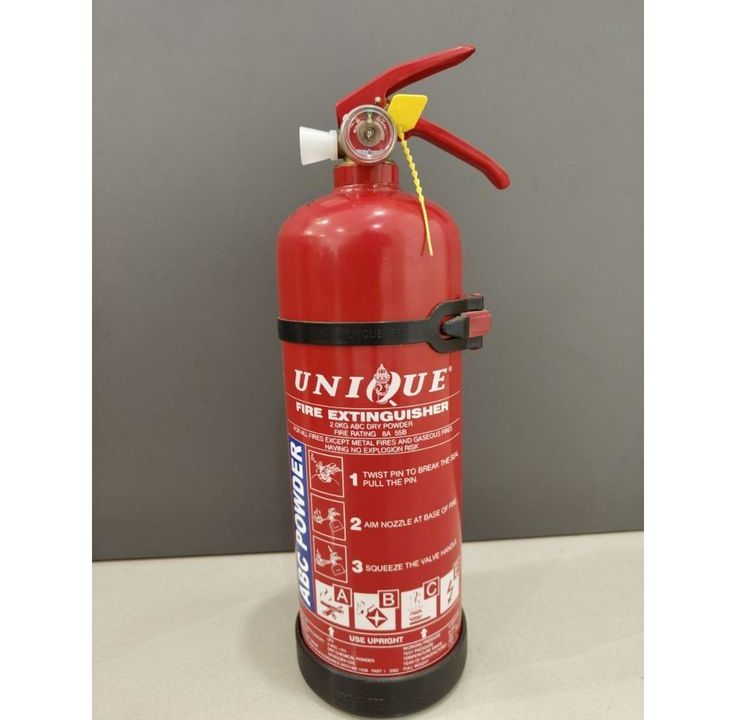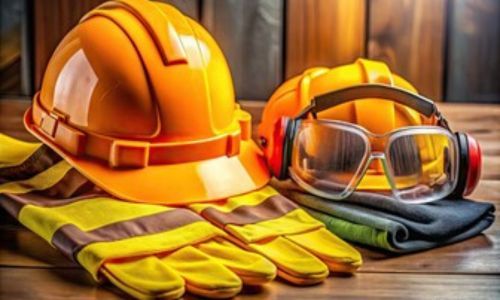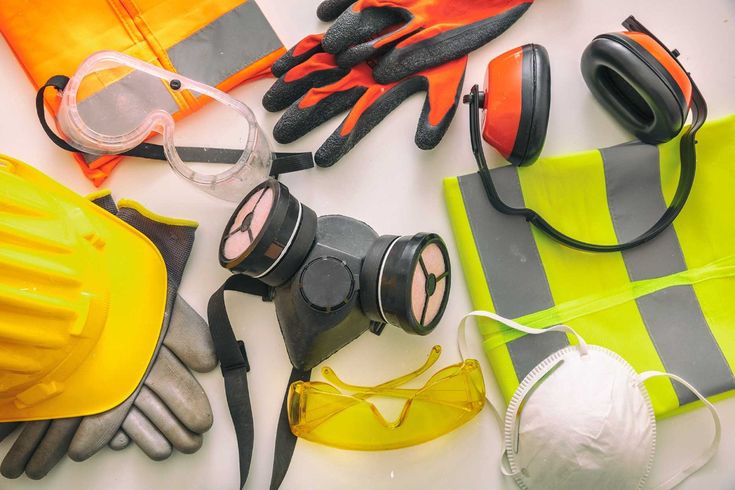Top 10 Safety Myths Busted by Experts

First Aid Box for Your Home: Why It’s Important and What to Include
April 22, 2025
Why Is Personal Protective Equipment (PPE) Important?
May 26, 2025Most of us believe we’re being careful every day—locking doors, using safety gear, and following basic rules. But many of these actions are based on what we think is right, not what experts actually say. And that’s a problem.
When you trust myths, you’re not protecting yourself or your team—you might even be doing the opposite. From personal habits to work routines, these misunderstandings can lead to injuries, long-term damage, and even death.
Some of these myths sound harmless but can create serious risks. Others are so common that people don’t even question them. That’s why knowing the truth is so important—especially when lives are at stake.
Let’s explore the safety myths Sri Lanka faces, and separate fact from fiction. These expert insights could help you avoid serious mistakes and stay truly safe.
Essential Takeaways
- Believing in safety equipment myths can put you and others at serious risk.
- Certified safety gear and proper training matter more than you think.
- Small tasks need big care—most injuries happen during quick jobs.
- Safety is everyone’s job, not just your manager’s or your company’s.
1. Myth: If something’s labeled “safety gear,” it must be safe
Just because something is called “safety gear” doesn’t mean it truly protects you. Some items sold online or in stores look strong but break easily when actually used. They might lack proper testing or international safety standards, which makes them unsafe.
For example, safety glasses may fog up or shatter if not made with impact-resistant material. A cheap harness might tear under weight or wear out quickly. Wearing such items gives a false sense of security and can lead to accidents.
Expert Tip
Before you buy safety equipment, check if it meets certified standards like ISO or ANSI. Always ask sellers for proof or certification. Trusted brands give clear details and testing information when you buy safety equipment online.
2. Myth: Wearing gloves protects your hands from all dangers
Not all gloves are the same. Using the wrong glove for the task can be worse than not wearing one at all. For example, a cotton glove won’t protect you from harmful chemicals. Rubber gloves can tear easily when handling sharp or rough tools.
Some people wear gloves while operating machines, but certain machines can catch gloves and cause serious injuries.
Expert safety tips for Sri Lanka
Always use cut-resistant gloves when working with blades, insulated gloves for electrical tasks, and chemical-resistant gloves for handling cleaners. Choose the right gloves for each job carefully. Don’t assume one pair fits every task or hazard.
3. Myth: You don’t need safety training for small tasks
This is one of the common safety equipment myths debunked by experts. Many people think they don’t need any training to climb a ladder, move a box, or do quick jobs. But these simple tasks are actually where many injuries happen every day.
Twisting your back wrong or falling from just a few feet can cause weeks of pain and keep you off work. Accidents don’t only happen during big or complicated jobs. They often happen when you rush, get careless, or skip small safety steps.
Top safety myths to avoid
Always ask for proper guidance and safety tips, even for short or easy jobs. A quick safety talk can stop big problems before they start.
4. Myth: First aid kits are only for emergencies
Many people store a first aid kit and never check it again. But first aid isn’t just for serious cuts or burns. It’s for any minor injury that can quickly become worse if ignored.
Even a small wound can become infected if not cleaned properly. And if you’re far from a hospital or doctor, having a proper kit matters even more to avoid complications.
Debunking health and safety myths
First aid kits should be kept at home, in the car, and at work. Always keep them updated because some items expire over time. The safety equipment price in Sri Lanka is small compared to the medical costs or time lost to sickness and recovery.
5. Myth: Fire extinguishers are all the same
Not all fire extinguishers work the same way. Some are for wood and paper fires, while others are made for oil or electrical fires. Using the wrong extinguisher can make a fire much worse and harder to control.
For example, using a water extinguisher on an oil fire will spread the flames quickly and cause more damage. This common misunderstanding leads to serious accidents and major property loss every year.
Workplace safety myths
It’s important to learn which extinguisher to use for each fire type. Make sure to label them clearly in your building and practice using them if you can. Knowing the difference between extinguisher types can save lives and protect your property.
6. Myth: Safety is the employer’s job, not yours
Many people think it’s only the boss’s job to keep the workplace safe. But safety works best when everyone joins in and takes responsibility.
If a floor is slippery and no one says anything, more people will fall. If someone sees a broken tool and keeps quiet, someone could get hurt badly.
Personal safety equipment myths busted
You are just as responsible for safety as your manager or supervisor. Speak up when something feels unsafe. It’s not complaining—it’s protecting your team and yourself.
7. Myth: Helmets are only for construction workers
This myth leads to many head injuries every year. Helmets are not just for builders. Cyclists, delivery riders, warehouse workers, and many others face real risks too.
In Sri Lanka, studies show that while motorcycle helmet use is high, many others exposed to risks don’t wear any protection at all. Falls, dropped tools, or even slipping on wet floors can cause serious head injuries.
Common safety myths debunked
If there’s any chance of head injury, always wear a helmet. They are light, comfortable, easy to wear, and can truly save your life.
8. Myth: Safety protocols slow down work
Some workers skip safety steps to save time. They feel procedures are boring, slow, or unnecessary. But the truth is, accidents take way more time and cause bigger problems.
An injury can stop a whole project for days or even weeks. Recovery, insurance claims, and legal steps all take a long time. It’s always better to take a few extra minutes now than lose many days later.
Expert advice on debunking safety myths
Slow is smooth. Smooth is fast. Following safety steps carefully makes you safer and more efficient in the long run.
9. Myth: You’re safer indoors during a natural disaster
This depends on the type of disaster and the building you’re in. During earthquakes, old or weak buildings may collapse suddenly. Staying inside such buildings is very dangerous and can cause serious injury or death.
In Sri Lanka, many buildings were not built with earthquake safety in mind. That makes knowing when and how to evacuate extremely important for your safety and survival.
Safety myths explained by experts
Check your building’s safety plan regularly. Know all escape routes clearly. Don’t ever assume being indoors automatically means you’re safe during a disaster.
10. Myth: More gear equals more safety
Wearing more gear doesn’t always mean you’re better protected. Too much gear can be heavy, hot, or uncomfortable. It can block your vision, limit your movement, or cause fatigue quickly.
This actually leads to more accidents, especially in hot or fast-moving jobs where you need to be quick and alert.
Common misconceptions about safety
Always choose the right gear for the task. More isn’t better—smarter is better. Gear should protect without stopping you from moving freely or doing your job well.
Frequently Asked Questions (FAQs)
1. What are the most common protection myths?
The most common myths include “all gear is safe,” “you don’t need training for small tasks,” and “safety is someone else’s job.” Many people believe these without checking facts, which puts them at risk.
2. How to debunk safety equipment myths?
Start with facts and trusted information. Learn from certified safety trainers or experts. Follow expert-approved procedures and always question old habits that seem unsafe or outdated.
3. How to identify and bust safety equipment myths?
To identify myths, listen carefully to what feels doubtful or doesn’t match expert advice. Then, check trusted sources or ask professionals to bust those false ideas for good.
4. What are some common safety misconceptions in Sri Lanka?
Many people in Sri Lanka believe simple tasks are risk-free. Some think basic tools don’t need regular checks or that emergencies won’t happen to them, which is dangerous.
5. Are there any safety myths in Sri Lanka?
Yes, especially about construction work, road safety, and fire prevention. Public awareness is improving, but these myths still cause many avoidable injuries every year.
Want To Stay Safe The Right Way?
Don’t trust old ideas that could get you hurt. Get expert advice, choose gear that really works, and protect what matters. At Safety First, we help people make smart, safe choices every day. Whether you’re buying your first helmet or updating your gear at work, we’re here to help.
Contact Safety First today to learn more about how to protect yourself with real, proven safety solutions.




